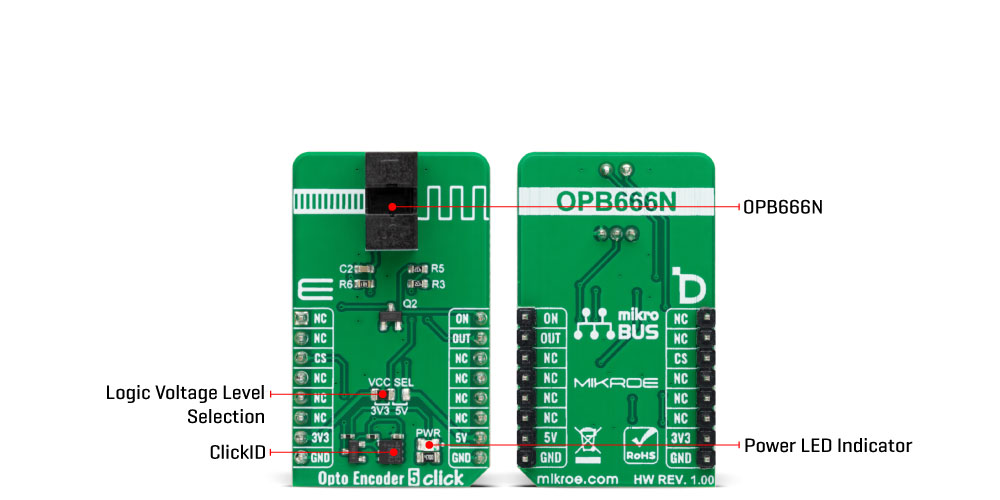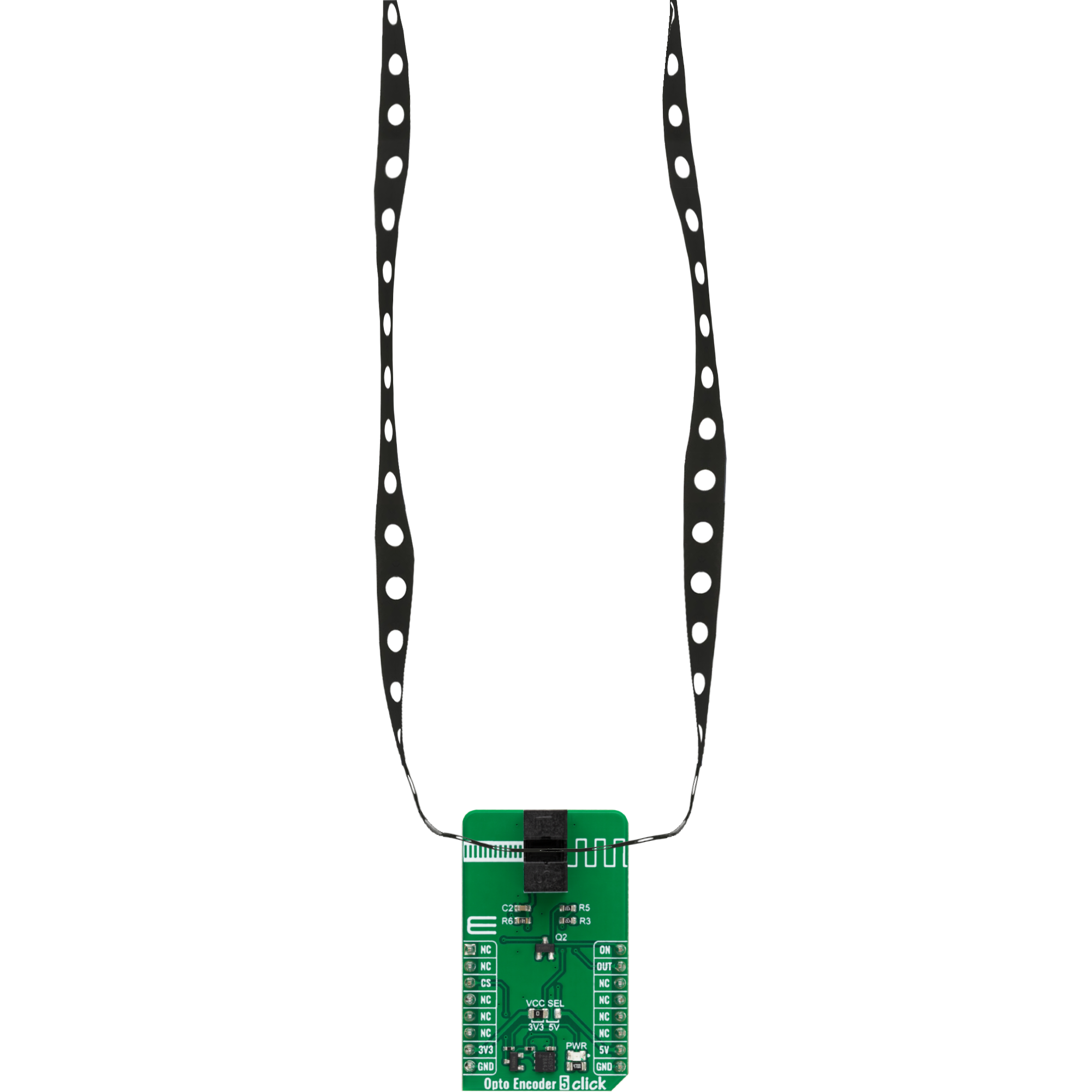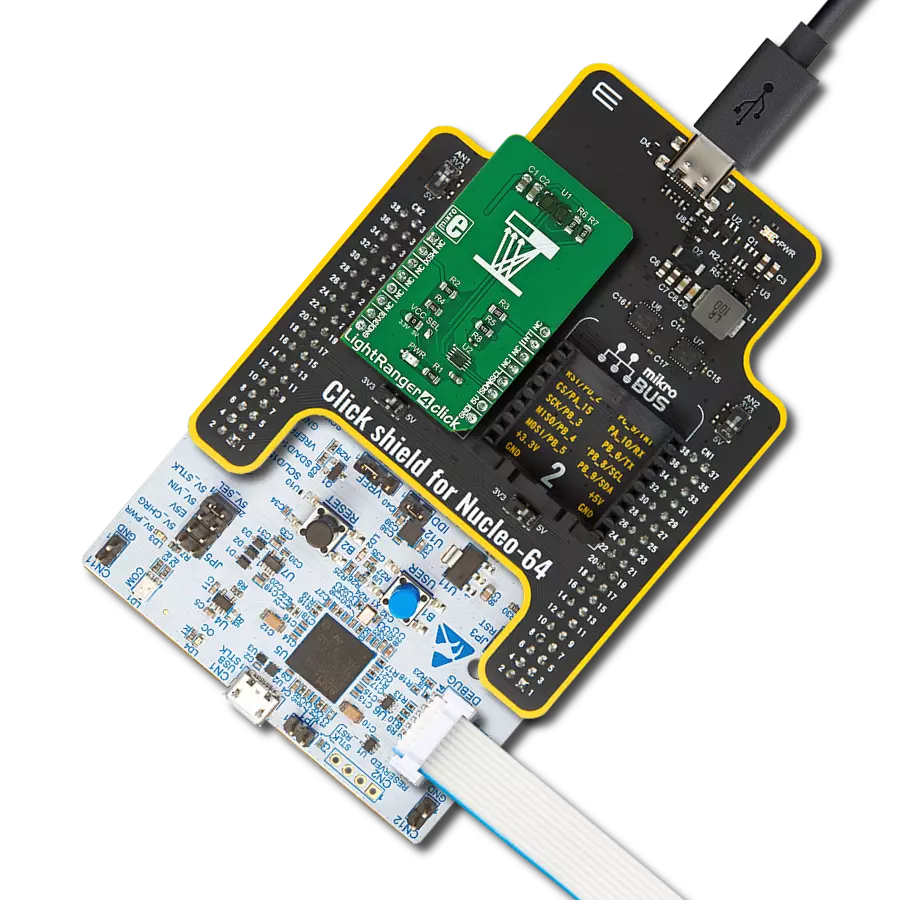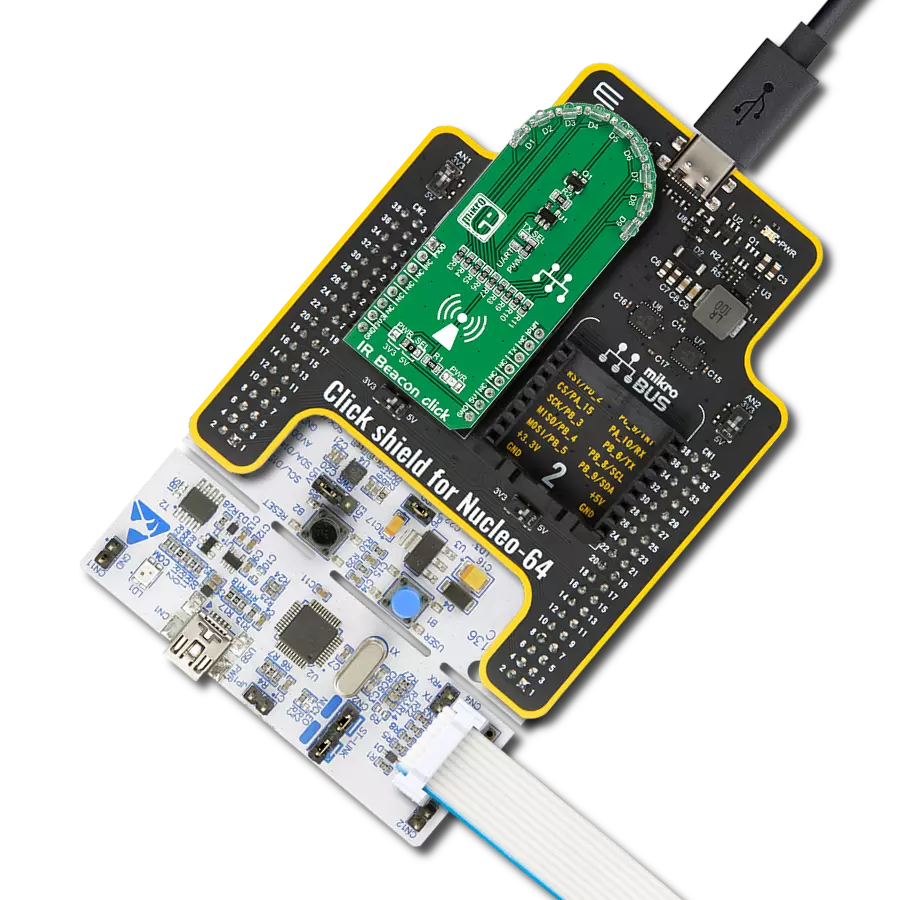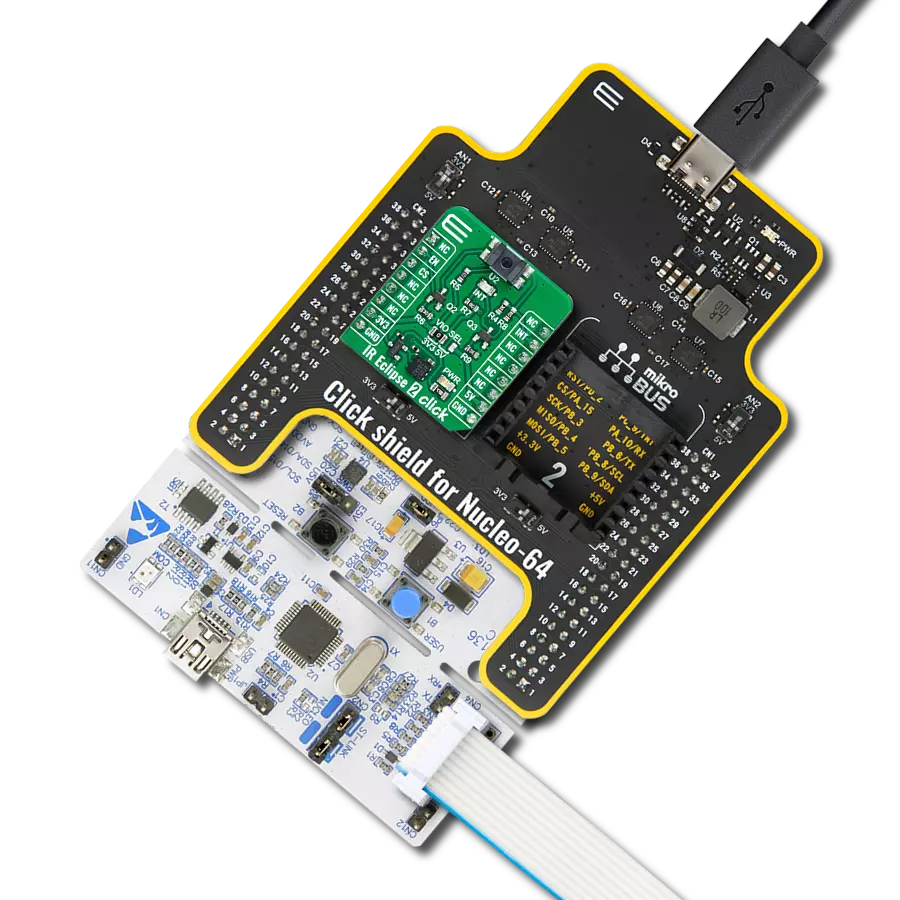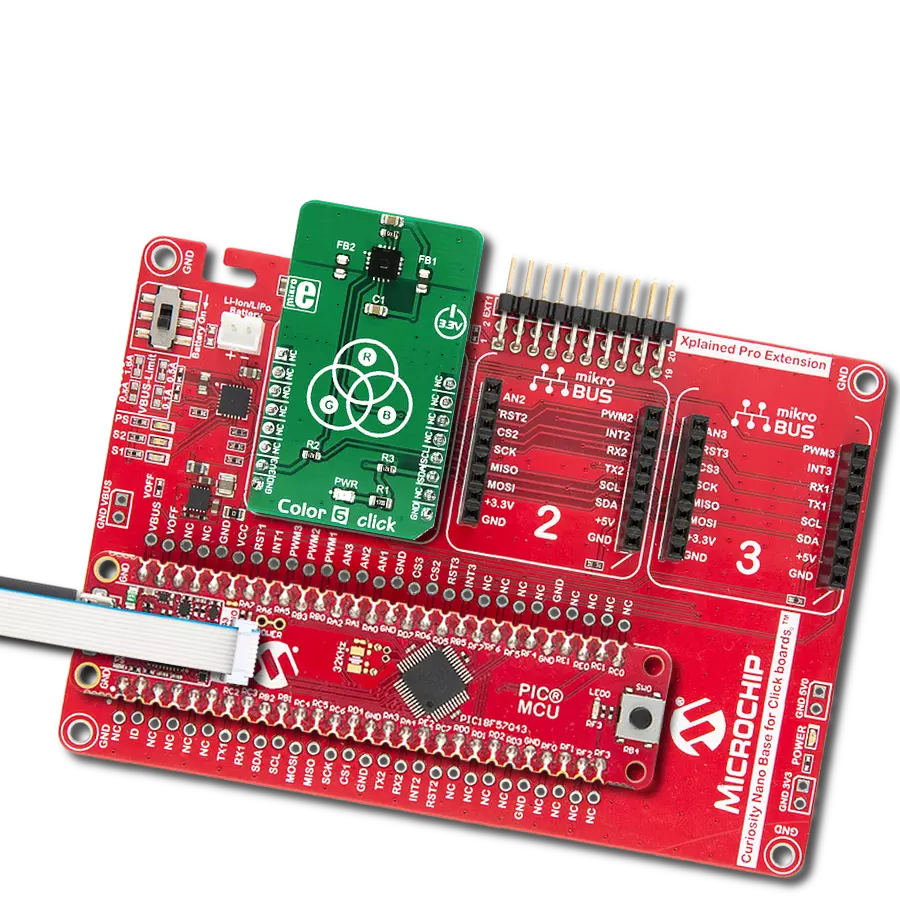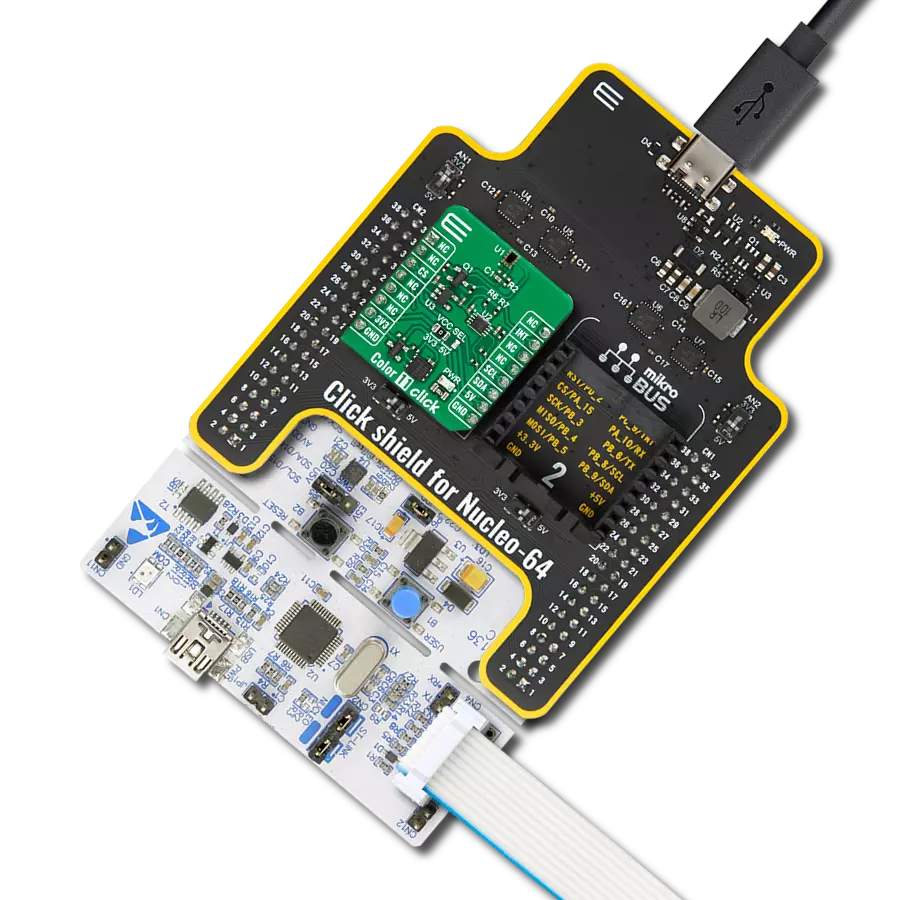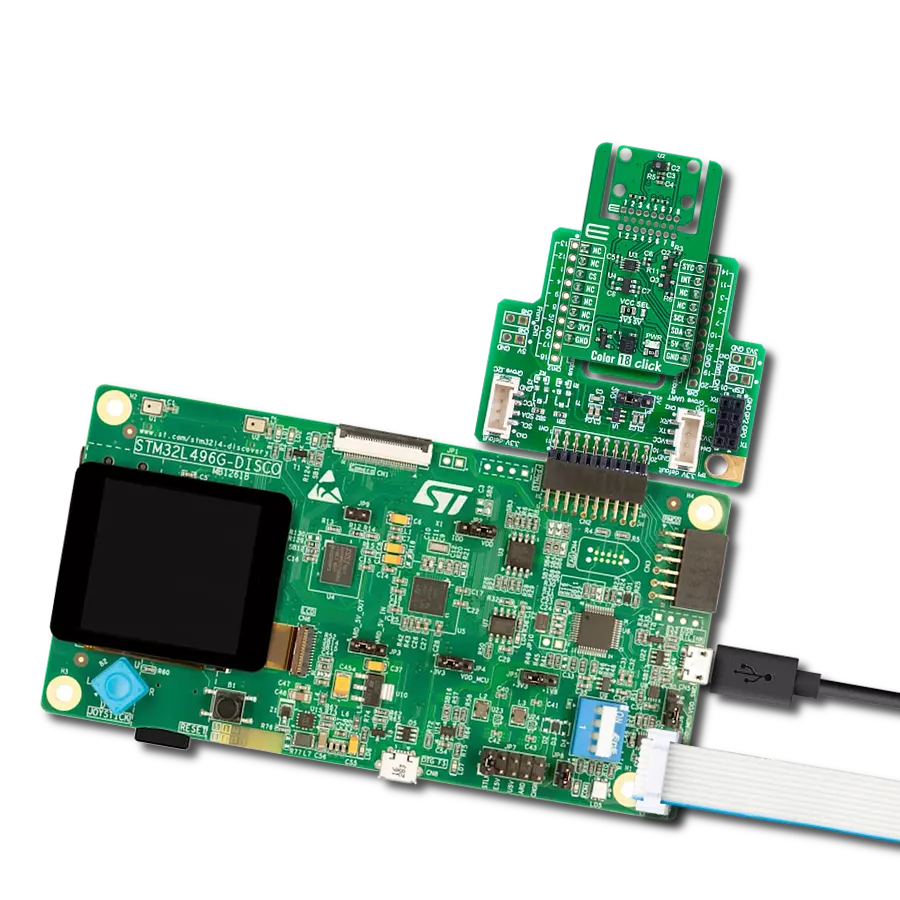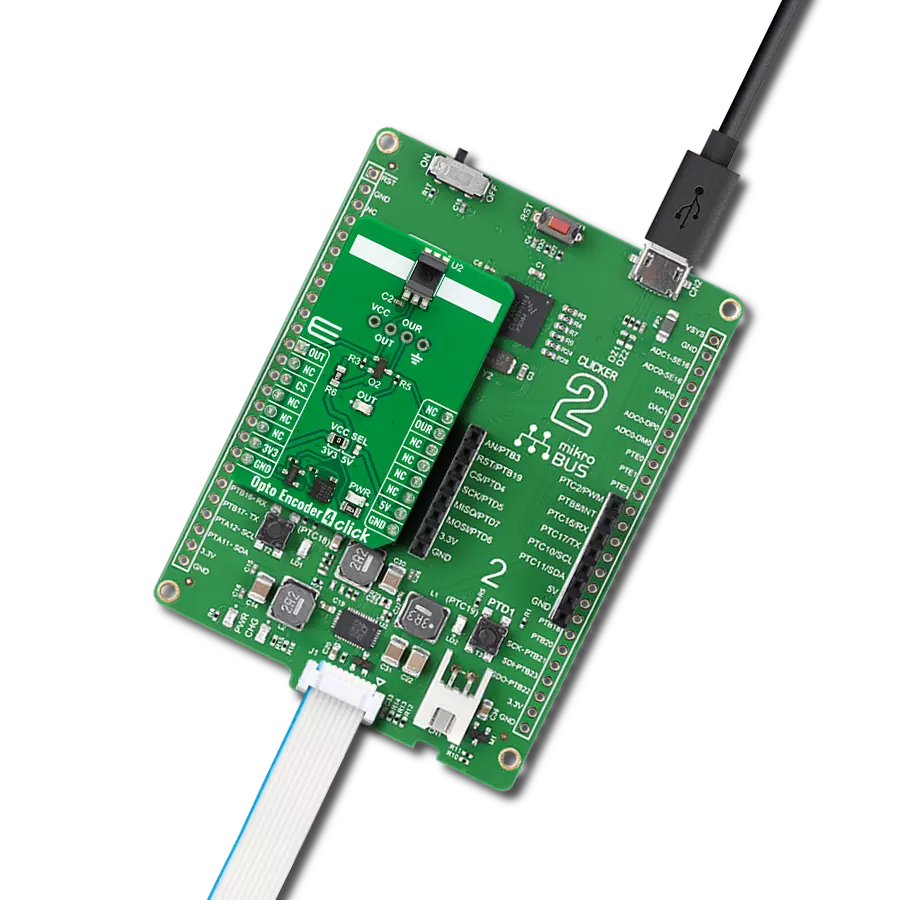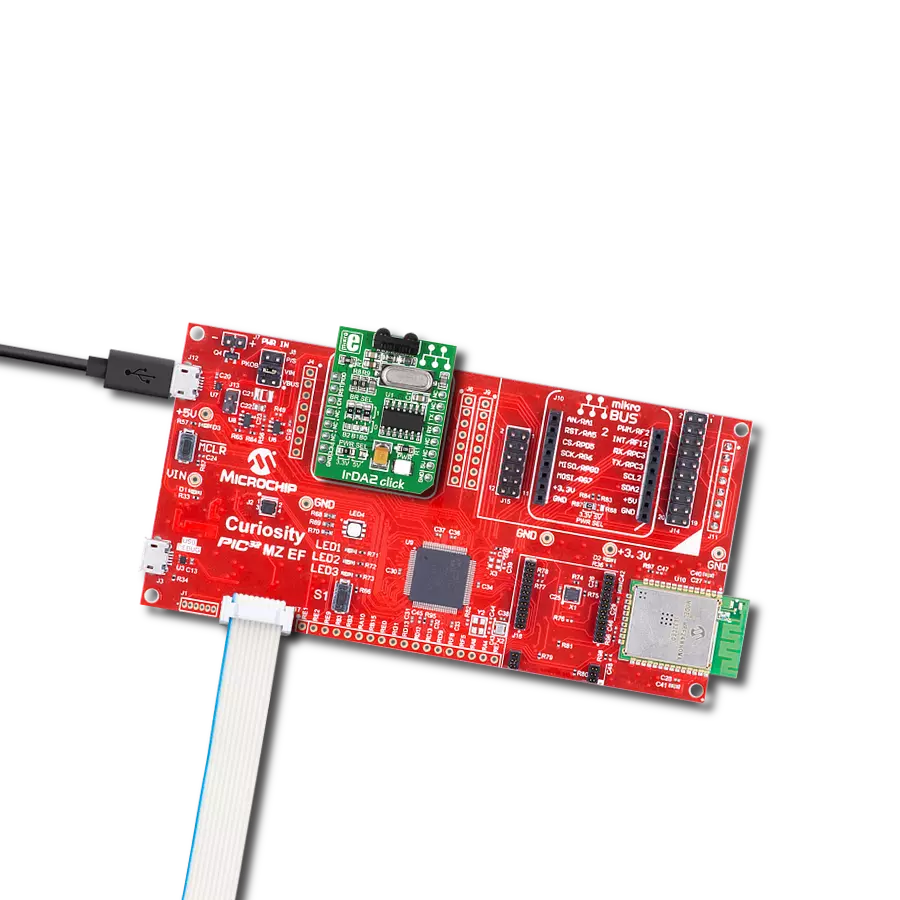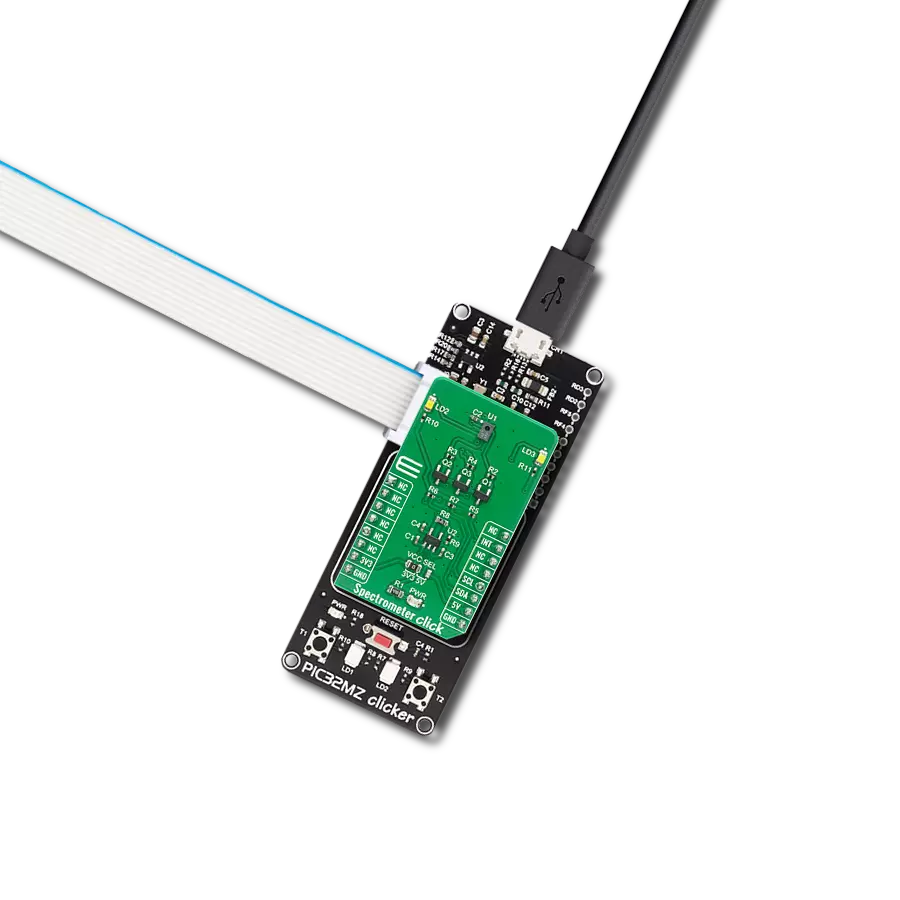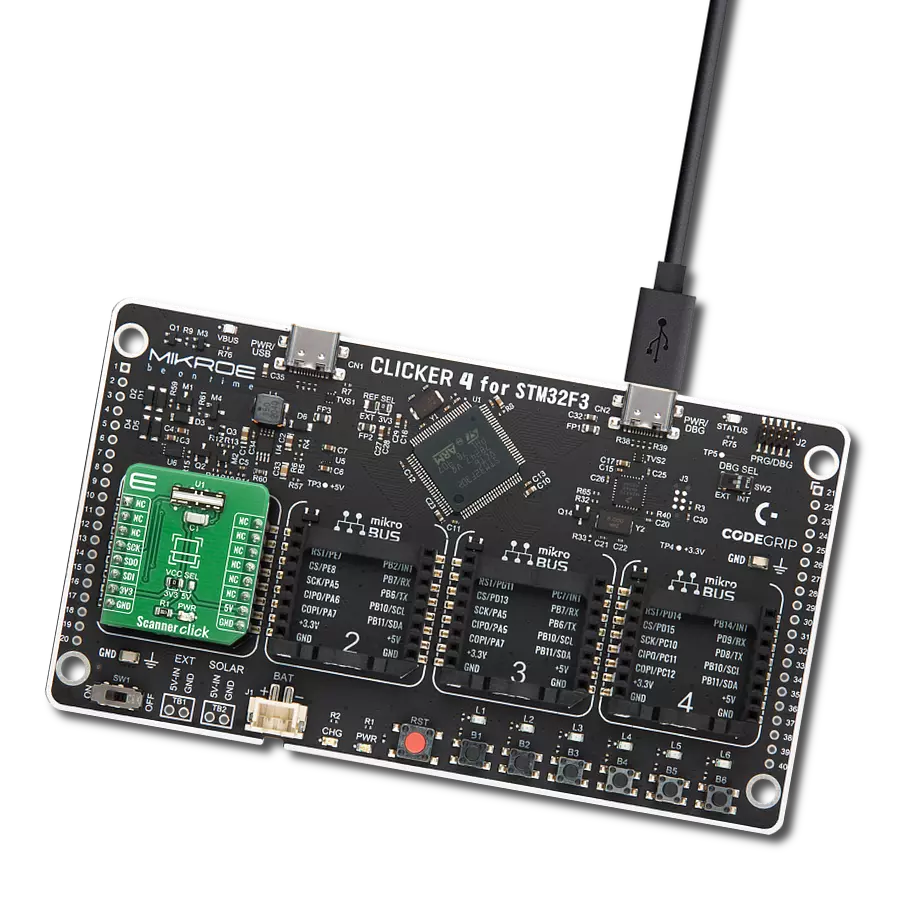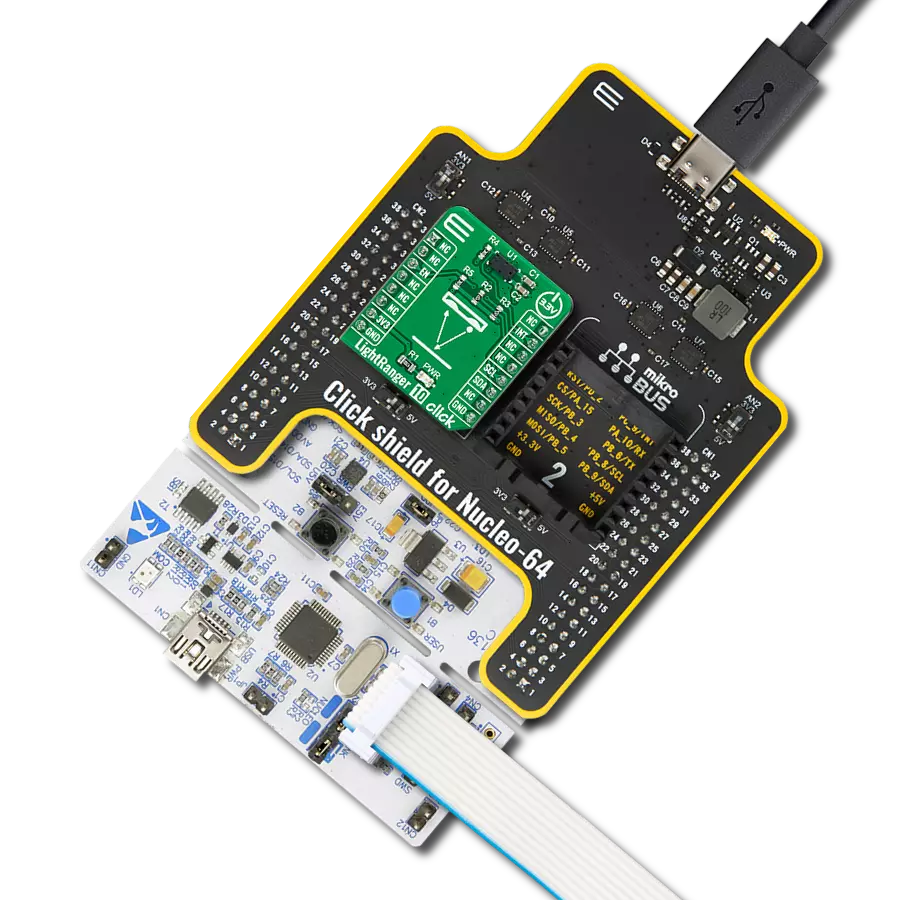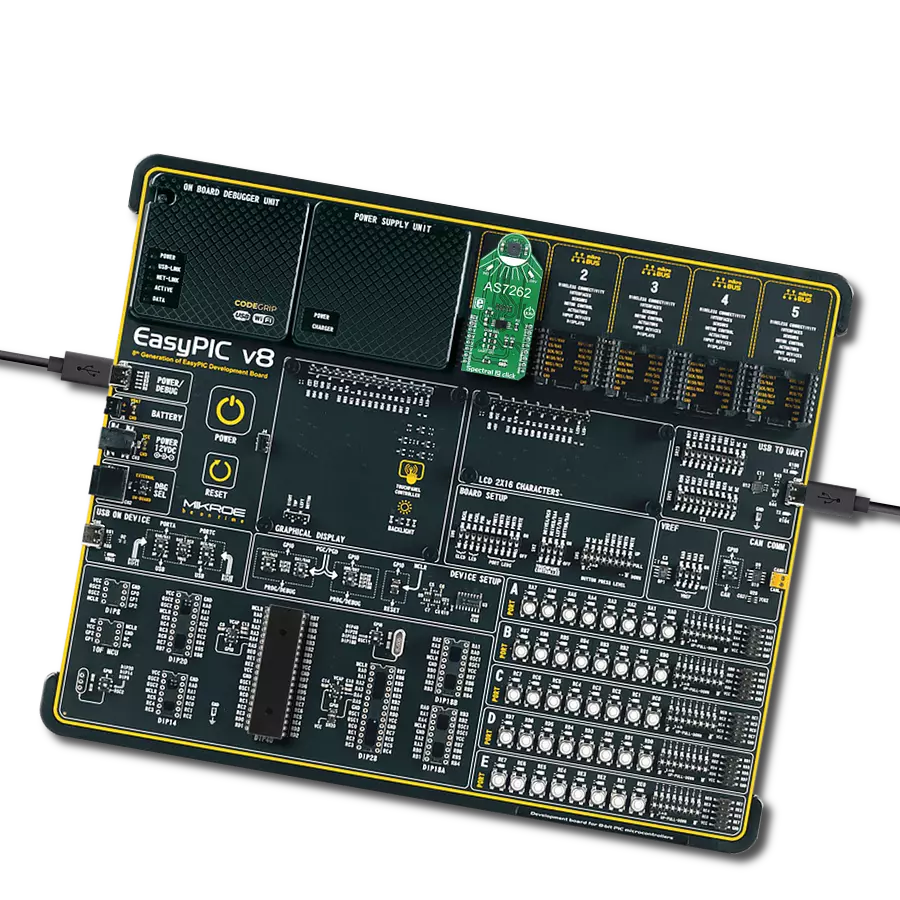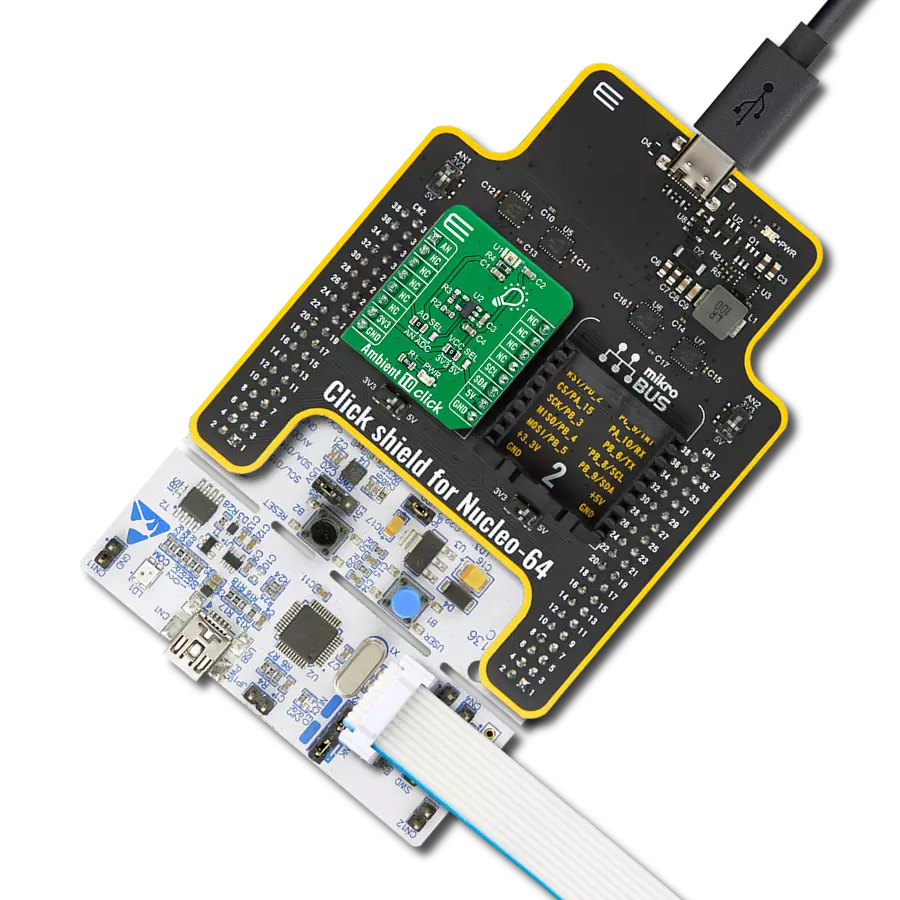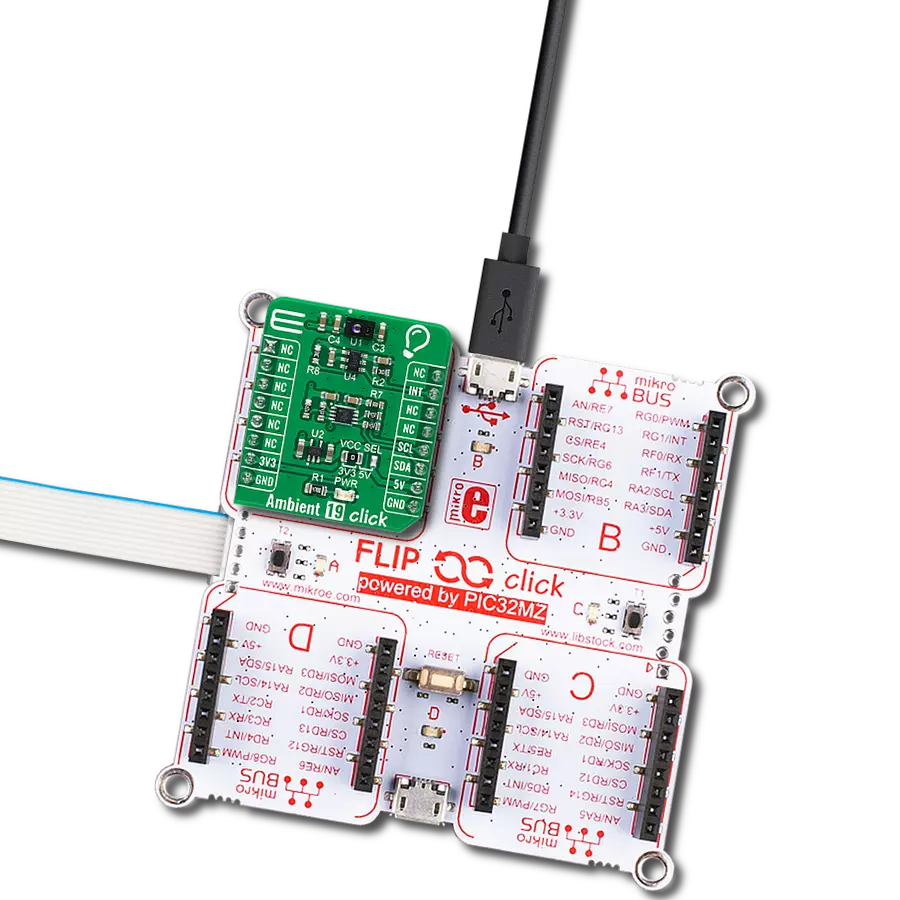Enable precise non-contact switching with high accuracy, ideal for replacing mechanical switches, measuring speed, and detecting object presence.
A
A
Hardware Overview
How does it work?
Opto Encoder 5 Click is based on the OPB666N, a Photologic® slotted optical switch from TT Electronics. This device integrates an infrared light-emitting diode (LED) operating at 890nm alongside a monolithic integrated circuit. It also combines a photodiode, a linear amplifier, and a Schmitt trigger all on one silicon chip. It operates effectively with a 5V power supply from the 5V mikroBUS™ power rail. It also features an NPN open-collector output configuration accessible through the OUT pin on the mikroBUS™ socket and the ON pin for enabling the optical switch. In addition, compatibility with TTI/LST TL is assured. This Click board™ finds its application in various domains, such as replacing mechanical switches, serving as a speed indicator
(tachometer), mechanical limit indicator, and edge sensing, thanks to its swift response times and real-time detection capability. The OPB666N is an optical sensor designed to make significant impacts across various sectors, pushing the boundaries of optical sensing technology. Its superior capabilities, coupled with a design that emphasizes compactness and durability, make it incredibly versatile. Its slim profile makes its incorporation into areas where space is at a premium, while its robust build guarantees consistent performance in even the most challenging environments. It is designed to resist extreme temperatures, vibrations, and moisture and is the ideal choice for rigorous industrial applications. The high-resolution
optics of the OPB666N assure unmatched accuracy and precision. Thanks to the onboard optical switch, the OPB666N, this Click board™ offers numerous advantages, including non-contact switching, improved signal-to-noise ratio, and employs a through-beam sensing technique. This Click board™ can operate with either 3.3V or 5V logic voltage levels selected via the VCC SEL jumper. This way, both 3.3V and 5V capable MCUs can use the communication lines properly. Also, this Click board™ comes equipped with a library containing easy-to-use functions and an example code that can be used as a reference for further development.
Features overview
Development board
PIC32MZ Clicker is a compact starter development board that brings the flexibility of add-on Click boards™ to your favorite microcontroller, making it a perfect starter kit for implementing your ideas. It comes with an onboard 32-bit PIC32MZ microcontroller with FPU from Microchip, a USB connector, LED indicators, buttons, a mikroProg connector, and a header for interfacing with external electronics. Thanks to its compact design with clear and easy-recognizable silkscreen markings, it provides a fluid and immersive working experience, allowing access anywhere and under
any circumstances. Each part of the PIC32MZ Clicker development kit contains the components necessary for the most efficient operation of the same board. In addition to the possibility of choosing the PIC32MZ Clicker programming method, using USB HID mikroBootloader, or through an external mikroProg connector for PIC, dsPIC, or PIC32 programmer, the Clicker board also includes a clean and regulated power supply module for the development kit. The USB Micro-B connection can provide up to 500mA of current, which is more than enough to operate all onboard
and additional modules. All communication methods that mikroBUS™ itself supports are on this board, including the well-established mikroBUS™ socket, reset button, and several buttons and LED indicators. PIC32MZ Clicker is an integral part of the Mikroe ecosystem, allowing you to create a new application in minutes. Natively supported by Mikroe software tools, it covers many aspects of prototyping thanks to a considerable number of different Click boards™ (over a thousand boards), the number of which is growing every day.
Microcontroller Overview
MCU Card / MCU

Architecture
PIC32
MCU Memory (KB)
1024
Silicon Vendor
Microchip
Pin count
64
RAM (Bytes)
524288
Used MCU Pins
mikroBUS™ mapper
Take a closer look
Click board™ Schematic
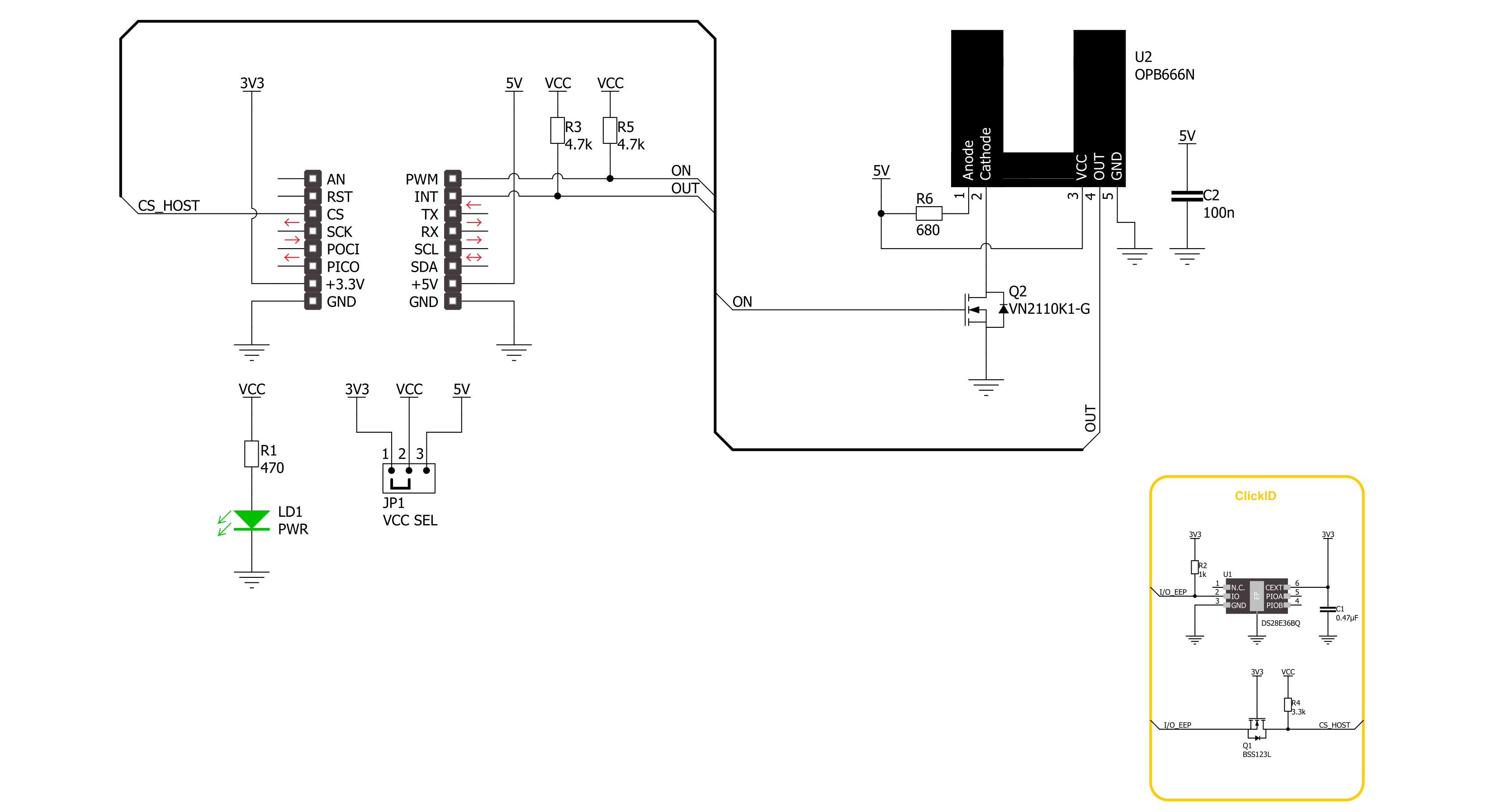
Step by step
Project assembly
Software Support
Library Description
This library contains API for Opto Encoder 5 Click driver.
Key functions:
optoencoder5_enable- This function enables the slotted optical switch of Opto Encoder 5 click board.optoencoder5_disable- This function disables the slotted optical switch of Opto Encoder 5 click board.optoencoder5_get_out_state- This function detecting slotted optical switch states of Opto Encoder 5 click board.
Open Source
Code example
The complete application code and a ready-to-use project are available through the NECTO Studio Package Manager for direct installation in the NECTO Studio. The application code can also be found on the MIKROE GitHub account.
/*!
* @file main.c
* @brief Opto Encoder 5 Click Example.
*
* # Description
* This example demonstrates the use of the Opto Encoder 5 Click board
* by detecting eclipse states.
*
* The demo application is composed of two sections :
*
* ## Application Init
* Initialization of GPIO module, log UART and enables the slotted optical switch.
*
* ## Application Task
* When the beam from the slotted optical switch is broken by placing an object in
* the gap ( like a piece of paper ), the counter is incremented by one
* when the sensor is triggered.
*
* @author Stefan Ilic
*
*/
#include "board.h"
#include "log.h"
#include "optoencoder5.h"
static optoencoder5_t optoencoder5; /**< Opto Encoder 5 Click driver object. */
static log_t logger; /**< Logger object. */
static uint8_t out_state = 0;
static uint8_t cmp_state = 0;
static uint16_t cnt = 0;
void application_init ( void )
{
log_cfg_t log_cfg; /**< Logger config object. */
optoencoder5_cfg_t optoencoder5_cfg; /**< Click config object. */
/**
* Logger initialization.
* Default baud rate: 115200
* Default log level: LOG_LEVEL_DEBUG
* @note If USB_UART_RX and USB_UART_TX
* are defined as HAL_PIN_NC, you will
* need to define them manually for log to work.
* See @b LOG_MAP_USB_UART macro definition for detailed explanation.
*/
LOG_MAP_USB_UART( log_cfg );
log_init( &logger, &log_cfg );
log_info( &logger, " Application Init " );
// Click initialization.
optoencoder5_cfg_setup( &optoencoder5_cfg );
OPTOENCODER5_MAP_MIKROBUS( optoencoder5_cfg, MIKROBUS_1 );
if ( DIGITAL_OUT_UNSUPPORTED_PIN == optoencoder5_init( &optoencoder5, &optoencoder5_cfg ) )
{
log_error( &logger, " Communication init." );
for ( ; ; );
}
optoencoder5_enable( &optoencoder5 );
log_info( &logger, " Application Task " );
}
void application_task ( void )
{
out_state = optoencoder5_get_out_state( &optoencoder5 );
if ( cmp_state != out_state )
{
if ( OPTOENCODER5_OUT_STATE_SWITCH_CLOSED == out_state )
{
log_printf( &logger, " Counter: %u \r\n", cnt );
cnt++;
}
cmp_state = out_state;
}
}
int main ( void )
{
/* Do not remove this line or clock might not be set correctly. */
#ifdef PREINIT_SUPPORTED
preinit();
#endif
application_init( );
for ( ; ; )
{
application_task( );
}
return 0;
}
// ------------------------------------------------------------------------ END

